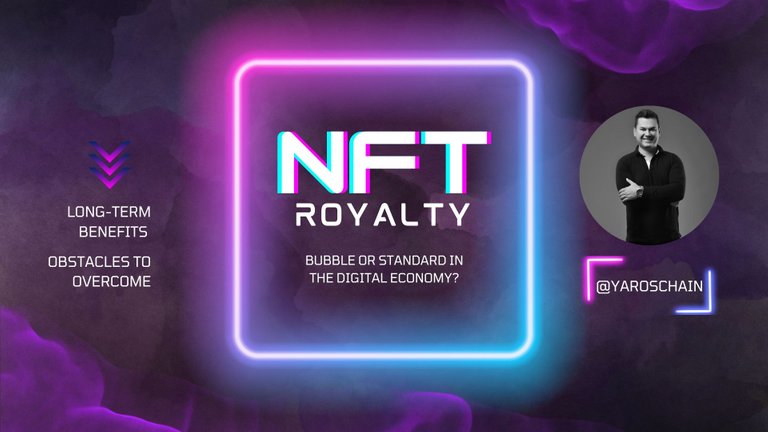
The concept of Royalty brings a different nuance to creating NFTs in the world of art and creativity. If non-fungible tokens provided a new form of digital ownership and transaction for creators, they can now also enjoy long-term payments for their works.
NFT royalties operate thanks to smart contract technology on the blockchain, where the creator can set a royalty percentage in the smart contract for the work. This self-executing contract has the terms of the agreement written directly in code. Thus, each time an NFT changes hands after the initial sale, the author automatically receives a percentage of the resale in his wallet. Although it may vary depending on the creator's preferences and the NFT platform's policies, the rate varies around 5-10%.
Long-term benefits
As the concept moves forward, NFT royalties are emerging as a promising avenue for decentralized financial growth. Once again, the economics of creators benefit, as instead of receiving a one-time payment for their work, they can benefit from the value of their work over time.
In turn, they democratize the payment process, allowing artists to receive fair compensation for their work no matter where it is sold. This is relevant in the digital world, where an artist's work can be shared and resold on platforms and marketplaces. Thus promoting a more equitable and transparent financial system.
A work in progress
However, it is essential to note that not all NFTs include royalties, and their implementation depends mainly on the NFT platform and the creator's decisions. This is not their only challenge; if the tokenized work is minted on a specific platform and then moved to another, the creator may not receive the Royalty from the sale. Therefore, creators must understand the royalty policies of NFT platforms before minting their works.
Like any other step within blockchain technology, there is a long way to go for royalties to overcome the hurdles and become a norm in digital art and creativity.
